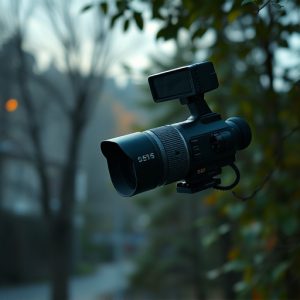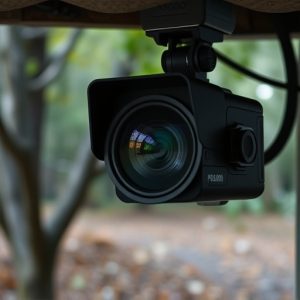Uncovering Hidden Microphones: Advanced Detection for Home Security
In the digital age, microphone bug sweeping is crucial for home security as hidden microphones can b…….
In the digital age, microphone bug sweeping is crucial for home security as hidden microphones can be found in everyday items. Homeowners use nanny cams or hidden microphones for safety and privacy protection, strategically placing them in areas like false walls, light fixtures, or behind furniture. Advanced detection techniques involve a combination of physical inspection and digital tools to uncover devices hidden in plain sight. Balancing detection with legal considerations, including adherence to regional privacy laws and ethical guidelines, is essential when using nanny cams.
“In today’s era of heightened home security awareness, understanding microphone bug sweeping and its vital role in protecting your private space is crucial. This comprehensive guide explores advanced detection techniques to uncover hidden microphones, commonly placed in unsuspecting locations like nanny cams. We delve into the art of identifying these devices, emphasizing legal considerations and ethical implications. Learn about effective strategies to safeguard your home environment from unwanted surveillance, especially when it comes to understanding where to hide nanny cams.”
- Understanding Microphone Bug Sweeping and Its Importance in Home Security
- Common Hidden Locations for Nanny Cams and Other Microphones
- Advanced Detection Techniques to Uncover Hidden Microphones
- Legal Considerations and Ethical Implications of Microphone Bug Sweeping at Home
Understanding Microphone Bug Sweeping and Its Importance in Home Security
Microphone bug sweeping, also known as audio surveillance detection, is a critical component of home security in the digital age. With advancements in technology, it’s easier than ever for malicious actors to secretly record conversations and activities within homes using hidden microphones. These tiny devices can be easily placed in various locations, such as light fixtures, smoke detectors, or even seemingly innocuous electronic devices, making them hard to detect with the naked eye. Understanding how these bugs operate is the first step towards safeguarding your privacy.
In today’s world, where home security goes beyond physical locks and alarms, microphone bug sweeping plays a vital role in protecting your personal spaces. It’s not just about identifying potential intruders; it’s about ensuring that your conversations, especially those involving sensitive information or private matters, remain confidential. Knowing where to hide nanny cams, for instance, is crucial for parents looking to monitor their children’s safety without compromising privacy. By being proactive and employing audio surveillance detection techniques, homeowners can take a significant step towards securing their habitats from unwanted ears and eyes.
Common Hidden Locations for Nanny Cams and Other Microphones
In the quest for privacy and security, many individuals install nanny cams or hidden microphones in their homes, often driven by concern for family safety or home protection. These devices can be strategically placed to capture footage or audio discreetly, but it’s crucial to understand common hiding spots where such devices might be installed. Where to hide nanny cams is a question that necessitates awareness of potential locations, from behind furniture and in corners to less obvious areas like false walls, light fixtures, and even within everyday objects like dolls, books, or kitchen appliances.
Advanced Detection Techniques to Uncover Hidden Microphones
In the digital age, privacy concerns have led to the development of advanced detection techniques for hidden microphones, often referred to as nanny cams. Beyond traditional visual inspections and metal detectors, modern methods employ sophisticated audio analysis tools that can identify subtle electromagnetic signals emitted by these devices. These tools are particularly useful in scenarios where high-tech nannies or surveillance equipment may be hiding in plain sight, such as within everyday objects like clocks, smoke detectors, or even decorative figurines.
To effectively uncover hidden microphones, experts suggest a multi-layered approach combining physical and digital scrutiny. This involves using specialized software to scan for unusual audio patterns that might indicate the presence of a listening device. Additionally, knowing where to look is paramount—common hiding spots include wall outlets, behind pictures or mirrors, under rugs, and within electronics like TVs or computers. By staying vigilant and utilizing these advanced techniques, individuals can better protect their privacy and ensure they aren’t being monitored without their knowledge.
Legal Considerations and Ethical Implications of Microphone Bug Sweeping at Home
When conducting microphone bug sweeping at home, it’s crucial to balance effective detection with legal and ethical considerations. The use of hidden cameras or microphones for surveillance must adhere to regional privacy laws and regulations. Installation and placement of devices like nanny cams require careful thought to ensure they are not positioned in areas that infringe upon personal privacy, such as bathrooms or bedrooms.
While the intention behind bug sweeping might be to ensure safety and security, it’s essential to remember the ethical implications. Unauthorized surveillance can create a sense of mistrust and invade personal space. It’s important to have transparent communication with all household members and, if applicable, those being monitored. Additionally, ensuring the secure disposal or deactivation of any recorded data is vital to maintain privacy and confidentiality.
Microphone bug sweeping, while a sensitive topic due to its legal and ethical complexities, is an essential tool for enhancing home security. By understanding common hiding places like hidden cameras (nanny cams) and employing advanced detection techniques, homeowners can ensure their privacy and peace of mind. Staying informed about the legal boundaries surrounding these practices allows for responsible and proactive measures to safeguard personal spaces. Remember, knowledge is power when it comes to securing your home environment.


